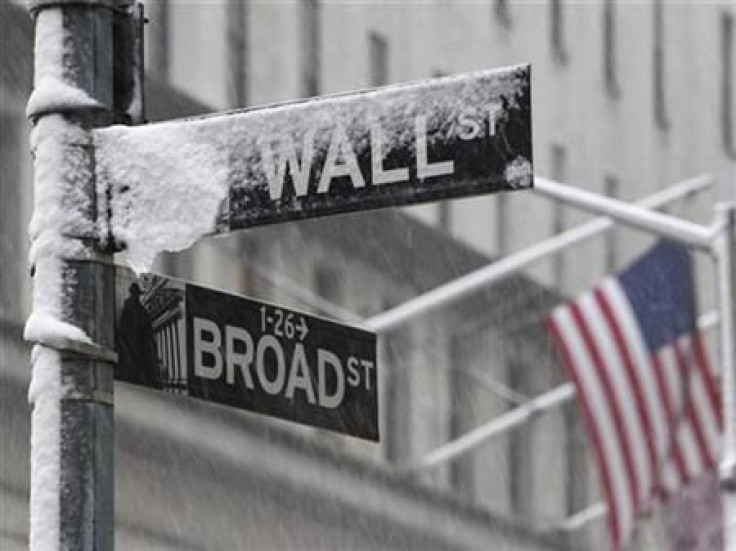Regulators seek to foil bank moves to undermine pay reform

Regulators began their most forceful attempt yet to clamp down on bank bonuses since the 2007-2009 financial crisis, and warned firms they would seek to counter attempts to circumvent the reforms.
While the proposals pale in comparison to similar restrictions in Europe, the talk of keeping a keen eye on loopholes indicates regulators want to get tough on banks that make symbolic pay changes while finding ways to gut the intent of reforms.
The Federal Deposit Insurance Corp endorsed on Monday a proposal that executives at the largest financial institutions, such as Bank of America and Goldman Sachs, have half of their bonuses deferred for at least three years.
The bank regulators said they may go further to ensure the bonuses properly align executives' interests with investors, and are considering toughening the proposal to restrict executives from hedging deferred bonuses in the form of stock.
The concern is executives could use hedging techniques to make up for losses if their company's stock goes down during the deferral period, which could put executives' interests at odds with those of shareholders.
Whether we should be prohibiting hedging in this, that is an issue that is left open, FDIC Chairman Sheila Bair said.
Despite the tough talk, the U.S. plan is markedly softer than the European Union, which in December set guidelines that top bankers be limited to receiving 20 percent of their annual bonuses upfront in cash, with some exceptions.
Massive cash payouts that reward bank executives and traders for short-term returns, without regard to long-term risk, have been cited by international regulators as a factor
in the recent financial crisis.
The U.S. plan responds to both the Dodd-Frank financial overhaul law of 2010, that directed regulators to curb pay plans that encourage excessive risk-taking, and principles agreed in 2009 by the world's group of 20 leading economies (G20).
The FDIC vote on Monday is just a first step and the proposal must still be approved by other U.S. financial regulators, such as the Federal Reserve and Securities and Exchange Commission, before being put out for comment for 45 days.
It is unclear when the other regulators will act, although FDIC staff said it should be within weeks.
PAYCHECK BOUNCEBACK
The U.S. proposal tackles pay for top executives at financial companies with $50 billion or more in assets, including JPMorgan Chase & Co and Morgan Stanley.
How much of the deferred pay an executive could receive would be tied to the performance of the company based on decisions made by the executive during the period covered.
It also calls for a large financial company's board of directors to identify employees other than top executives, such as top traders, whose activities could potentially endanger the institution or who pose a material risk.
The company would then have to come up with a method of paying these employees that would limit excessive risk taking. This could include, but is not limited to, deferring bonuses.
Many Wall Street firms have already spread out their bonus payments in anticipation of the impending rules, but the rule could prevent banks from slipping back to old practices once public pressure wanes.
This proposal is kind of catching up with what companies are doing right now anyway, said Joseph Sorrentino, managing director at compensation consulting firm Steven Hall & Partners.
There are signs that in both the United States and Europe that there is upward creep in total compensation figures that offsets the curbs.
Goldman Sachs revealed last month that it tripled Chief Executive Lloyd Blankfein's base salary and awarded him $12.6 million of stock, even after the bank's net income plunged last year.
Citigroup's board approved a base salary of $1.75 million for CEO Vikram Pandit. Pandit had vowed in 2009 to receive an annual salary of $1 until Citigroup returned to sustained profitability.
In Britain, banks such as HSBC and Barclays have raised the fixed part of bank pay in what they say is an essential move to retain staff.
Paul Hodgson, an expert at independent research firm Corporate Library, said it is encouraging that regulators are trying to sniff out loopholes like the hedging of deferred bonuses -- a practice he suspects is rampant at banks.
(Hedging) does even more to divorce the interests of shareholders and management, Hodgson said.
GLOBAL VARIATIONS
Bonus reforms in the United States have lagged behind international counterparts in carrying out the G20 framework.
The G20's regulation task force, the Financial Stability Board, found in a study last year that implementation of pay reforms had been patchy and it will do another review soon.
While Asia avoided the worst of the financial crisis, China, Hong Kong and Singapore have all introduced rules or guidelines that aim to put the G20 agreement into practice.
Bair acknowledged that international counterparts have moved more quickly on bank pay reform, and in some cases have been more prescriptive in their rulemaking.
It does bring us closer to international standards that have been adopted, Bair said about Monday's proposal. It's not perfect uniformity.
The FDIC board also approved a final rule that will require large banks to pay more into the agency's fund used to cover the cost of failing banks. The change was required by Dodd-Frank and smaller banks lobbied hard for its inclusion in the law.
Bank of America, JPMorgan and Citigroup combined could have to pay about $1 billion more per year under the new, liabilities-based assessment plan, according to industry estimates.
(Reporting by Dave Clarke in Washington, Huw Jones in London, Rachel Armstrong in Singapore and Elinor Comlay in New York; Editing by Tim Dobbyn)
© Copyright Thomson Reuters 2024. All rights reserved.











